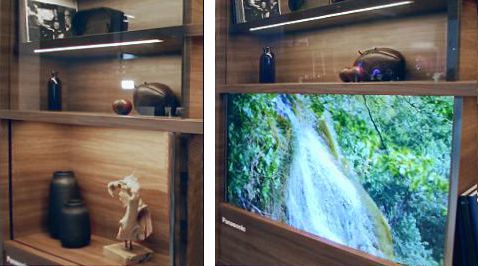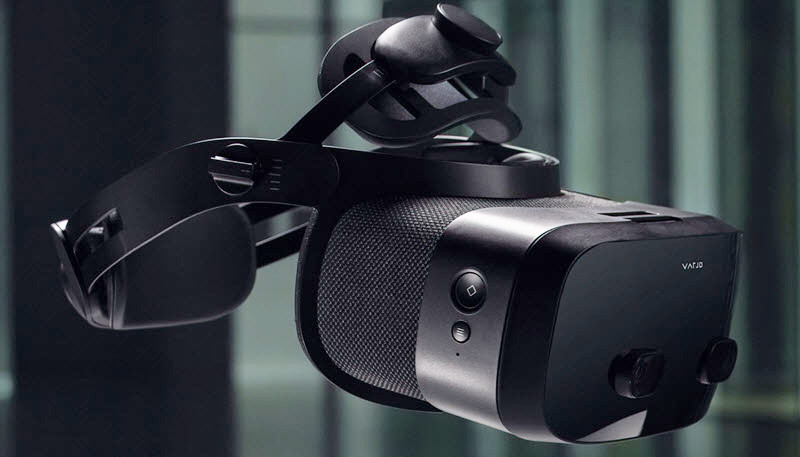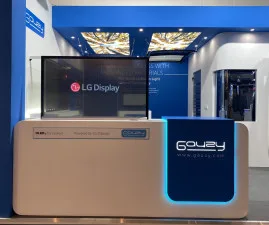There has been a positive change in the understanding by non-specialists in a particular display topic in recent years, enabled by great new microLED, OLED and miniLED displays. That is the change in the appreciation that it’s the black level in a display that is often the most important aspect of the display, rather than the brightness. But there is one type of display where black is a particular challenge.

The type of display in question is the transparent display. By definition, transparent displays allow light through the display whereas to get a good black you need to block the light from the back as well as any light that is reflected from the front. If you are building a display system that is part of a retail display case, where you want the user to see a real object while information is superimposed, then a lack of black is not a problem. However, if you are trying to show any kind of video, the lack of black often makes the content less involving than it might be (to put it mildly!)
I remember some concept demos of transparent TVs by Panasonic, shown at CES and IFA some years ago. When the TVs were just showing information – such as weather or scheduling info, or when nothing was on the display the transparency was not an issue. However, when you wanted to watch video, the firm had to develop a switchable secondary ‘black layer’ behind the TV. Effectively, this was a single pixel monochrome LCD. That allowed reasonable video to be shown but at extra cost and complication as well as adding thickness. And, of course, you can’t do any kind of FALD or miniLED backlight to give optimum TV performance.
 Panasonic’s Transparent TV in 2016
Panasonic’s Transparent TV in 2016
However, there is an application that has a bigger problem with transparency and that is AR. AR is about seeing the real world with some kind of additional information overlaid. When there is something bright behind the information, it can distort whatever you are trying to show. In an ideal world an AR headset would be able to selectively block whatever is behind the display to produce black where it is needed or desired. That’s really tricky on AR glasses that may already be challenged in terms of the level of transparency and will be under huge pressure in terms of weight and form factor. It’s what AR specialists call ‘the occlusion challenge’ and although there is some development (for example in the Magic Leap 2) in this area, nobody that I know in the field has a real solution. (although I’d be happy to be wrong – contact me here if you have a solution!)
Passthrough AR is a Solution
The best way to solve the problem for AR at the moment is using ‘passthrough’ AR. In this configuration, you block the light to the eyes with VR goggles and achieve the effect of transparency by combining (or compositing) a view of the real world into the view that the user sees along with any additional information. The downside of this (apart from the human factors and comfort issues of VR goggles) is that there has to be some time taken from the light hitting the camera sensor and the appearance of the image from the sensor on the display. Companies developing products in this category, such as Varjo, are working hard to minimise the sensor to display latency and Qualcomm’s latest Snapdragon XR2+ chip, being used in the new Meta XXX headset is being promoted as having latency as low as 10ms.
 Headsets with passthrough AR like the Varjo VR3 have dual cameras as close as possible to where the eyes would be.
Headsets with passthrough AR like the Varjo VR3 have dual cameras as close as possible to where the eyes would be.
However, one of the most interesting application areas for transparent displays is in digital signage. When Samsung Display (SDC) was trying to develop its RGB|| OLED TV business a decade ago, it made a number of transparent OLED displays. Unfortunately, professional digital signage applications take a while to develop, and by the time those whose interest had been piqued by the SDC displays came back to buy a lot, they were no longer available as SDC had abandoned that approach to large OLEDs.
On the other hand, LG Display has continued to try to raise interest in transparent displays. My attention was drawn to a recent announcement by an Israeli company, Gauzy, that said that it was working with LG Display to provide switchable glass that could be used behind transparent displays to offer a solution for digital signage.
Gauzy has a technology that it calls SPD (for Suspended Particle Device) that allows controlled dimming of parts of the special film to block up to 99% of the light that would otherwise come through the display. Gauzy also supports polymer dispersed liquid crystal display (PLCD) technology to create ‘active glass’ to block the light behind transparent displays. The firms were at Glasstec, a trade show in Germany, to demonstrate how the SPD glass could be combined with LG’s OLEDs.
Gauzy, of course, is also interested in applications that don’t (currently) use displays such as automotive visors and sun roofs. The company is a material supplier and licenses technology from Research Frontiers (Nasdaq:REFR). It makes nanoparticle materials in Israel that are used in its glass film products, which are made in Stuttgart. The firm said that the materials have been used in aviation since 2001 and in automotive applications since 2011. One of the benefits of the film is the blocking of UV and infrared light and that can mean cooler vehicle interiors. (BR)


